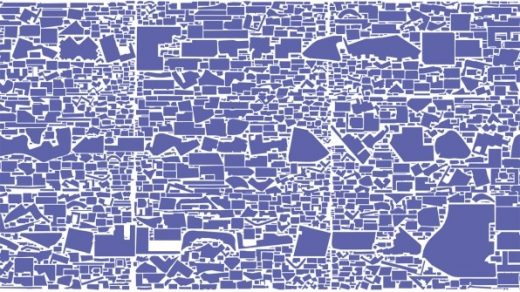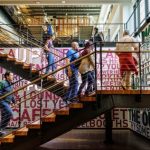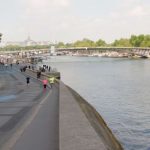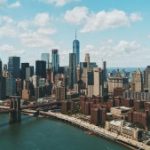See Just How Much Of A City’s Land Is Used For Parking Spaces
Two of the massive parking lots next to Dodger Stadium in L.A.–together roughly the size of Grand Central Station, or twice as big as the Pentagon–have room for thousands of cars. On non-game days, they’re largely empty. A new visualization shows the footprint of each lot, arranged in a puzzle-like design next to every other parking lot in greater Los Angeles, to make a point about how cities use space.
The visualization is part of a project called What the Street? that inventories parking lots in 23 cities around the world, along with the space used for roads, rail lines and rail yards, and bike paths and bike parking. All of that space is neatly arranged in a scrolling chart, so it’s possible to compare transit modes and see, for example, that bike parking is relatively non-existent in Los Angeles, while car parking takes up 17,020,594 square meters of land, as much as nearly 1,400 soccer fields.
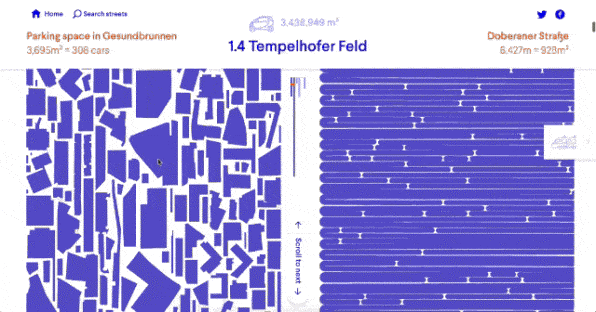
“We were thinking about how to make it most intuitively and accessibly comparable,” says Michael Szell, a researcher-in-residence at Moovel Group, the German software firm that produced the site, who collaborated with Moovel’s artist-in-residence Stephan Bogner to create the visualizations. “Basically, what we needed to do was reduce all of the space that is out there–all of these complicated structures–to just one dimension.”
The site pulls data about city spaces from Open Street Map, a system that creates urban maps through crowdsourcing (because the data is crowdsourced in a Wikipedia-like way, it may not be exact, and may sometimes miss some smaller features like bike racks). Using an algorithm, all of the parking lots are tightly packed together so the total amount of space is easy to understand. As you hover over a particular lot in the visualization, the site lists the square meters it takes up and estimates the number of parking spaces (this is a rough approximation, and may be less accurate in large lots). The code for the project is open source so it can be applied to other cities.
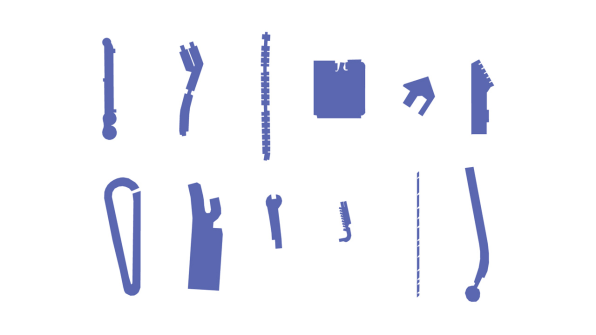
Previously, as a researcher at MIT’s Senseable City Lab, Szell studied how easily taxi rides could be shared in New York City. He then became interested in other inefficiencies in city mobility, and what might change as different transit modes such as shared, autonomous cars become more common.
At the moment, cars spend around 95% of the time parked, and only 5% of the time in use. Huge swaths of cities, either in parking lots, garages, or street parking spaces, are used as storage for cars (while, at the same time, many cities struggle to find enough land to build housing to keep up with demand). “There’s this huge space that’s basically wasted,” says Szell.
With a large shift to on-demand autonomous cars–something that some experts say could happen in a little more than a decade, as electric robo-taxis become far cheaper to use than traditional personal cars–parking space in prime urban locations could open up for other uses (though these self-driving cars will still need a place to park at times). Another recent report estimates that 2 million people in L.A. will give up their cars for autonomous ride hailing in 15 years, and similar patterns will happen in other cities.
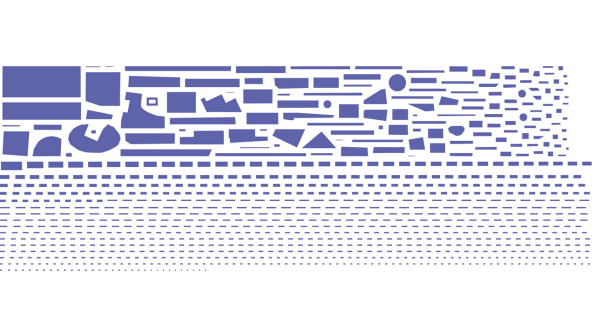
In areas where parking lots are already underused, some cities are already rethinking the use of space. A parking lot in downtown Dallas is becoming a park. Others are considering future-proof parking garages that could be easily converted into housing or office space as demand for parking declines. Architects have considered how parking spaces could be better used as playgrounds or affordable housing; the winner of one recent competition envisions turning street parking spaces into tiny parks. Without the need for street parking, streets could also be redesigned to give people on bikes and pedestrians more space, or add dedicated bus lines.
Some retailers, too, are beginning to reconsider the use of parking lots. Even on the busiest shopping days, some malls and big box stores have empty space in lots; on an average shopping day, a struggling location is likely to have excessive space. (The tech company Orbital Insight analyzes satellite images of retailer parking lots to assess the financial health of the store). As ride hailing makes it easier to access stores that don’t already have public transit access, even less parking will be needed. Macy’s has identified 50 stores where it could carve out room in its parking lots for other uses, such as restaurants.
After scrolling through each chart, the website estimates how much parking space could be reclaimed in a particular city with a shift to autonomous, shared cars. In L.A., for example, 2,465,272 parking spaces could theoretically be used for something else.
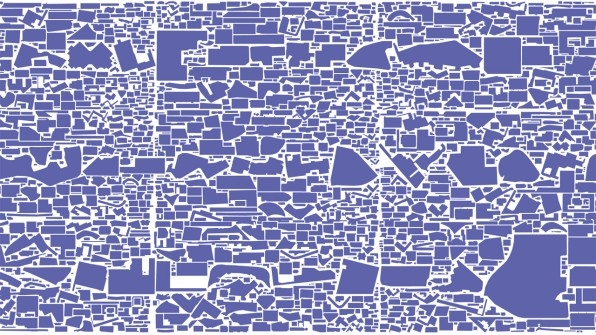
A separate visualization shows how space is allocated in a city between modes of transit, and how that compares to how people actually get around. Unsurprisingly, use tends to follow the available infrastructure. If most people drive, Szell says, that’s most likely because most space is currently dedicated to cars. “In urban planning, there is this notion that once you build infrastructure then it will be used,” he says. If there are highways, people drive; if there are separated bike lanes, more people will begin to bike.
The data could also help city planners. “Cities like New York don’t have an inventory of their own street parking spaces,” he says. “Basically, the city does not know how much parking the city has. These kinds of tools–either crowdsourced like What the Street, or maybe in the future machine learning or computer vision algorithms, could quantify really rigorously how much space there is and how much space is necessary, or how much space could be turned into more useful space like parks.”
In Los Angeles, for example, car parking takes up 17,020,594 square meters of land.
Two of the massive parking lots next to Dodger Stadium in L.A.–together roughly the size of Grand Central Station, or twice as big as the Pentagon–have room for thousands of cars. On non-game days, they’re largely empty. A new visualization shows the footprint of each lot, arranged in a puzzle-like design next to every other parking lot in greater Los Angeles, to make a point about how cities use space.
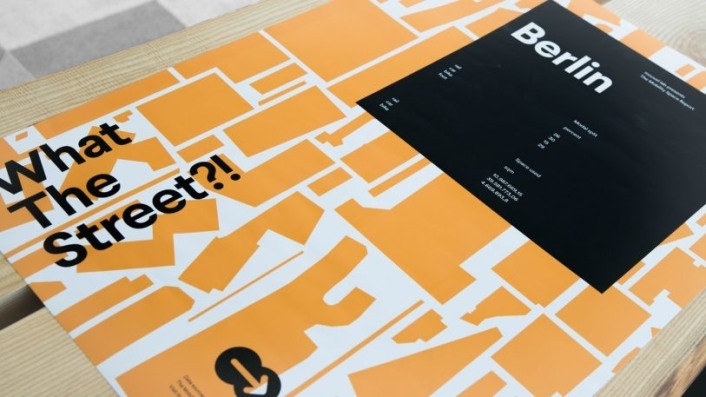
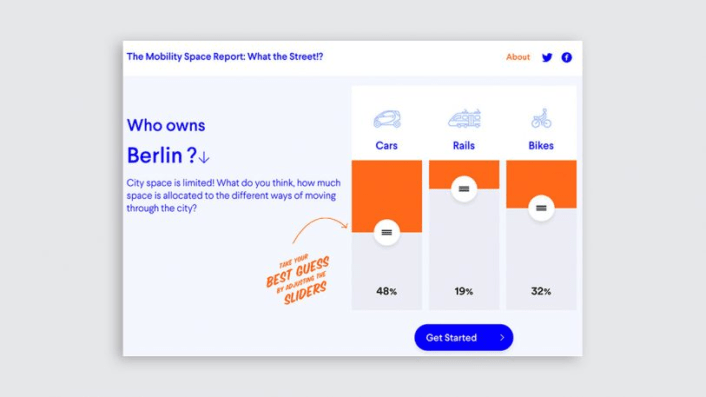
Fast Company , Read Full Story
(36)

